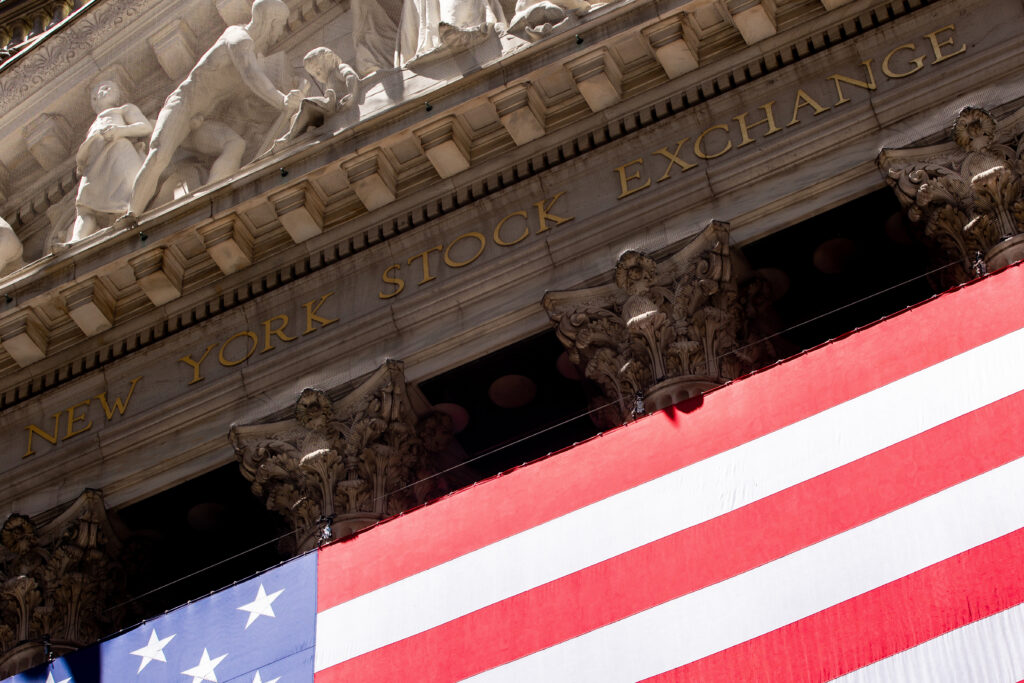Wall Street stocks end mixed , S&P 500 rose again
Newslooks- AP
A late burst of buying erased some of the stock market’s losses Thursday, leaving indexes mixed on Wall Street though still on pace to end lower for the week.
The S&P 500 rose 0.3% after having been down 1.3% earlier in the day. The benchmark index’s positive turn in the last 10 minutes of trading ended a four-day losing streak.
The Dow Jones Industrial Average also bounced back from an early slide to finish with a 0.5% gain, while the tech-heavy Nasdaq composite fell 0.3%. Several measures of small and mid-size companies also lost ground, including the Russell 2000, which closed 1.2% lower.
The mixed finish for stocks comes as traders look ahead to the Labor Department’s latest monthly job market snapshot Friday. The Federal Reserve will consider the August update on job and wage growth as it determines further interest rate hikes in its bid to slow the economy enough to bring down inflation.
“We’ll be able to get a better read on markets tomorrow after that number comes out,” said Sameer Samana, senior global market strategist at Wells Fargo Investment Institute. “At least right now, the path of least resistance for markets remains lower.”
The S&P 500 rose 11.85 points to 3,966.85, while the Dow added 145.99 points to 31,656.42. The Nasdaq slid 31.08 points to 11,785.13, its fifth straight drop. The Russell 2000 index of smaller companies fell 21.30 points to 1,822.82.
Gains in health care stocks, companies that rely on direct consumer spending and communications services providers helped lift the market. Johnson & Johnson rose 2.5%, Target gained 2.8% and Netflix added 2.9%.
Technology stocks were once again one of the heaviest weights on the market. Nvidia dropped 7.7% after the chipmaker said the U.S. government imposed new licensing requirements on its sales to China.
Energy stocks fell as the price of U.S. crude oil, which is coming off its third month of declines, dropped 3.3% to $86.61 a barrel. Chevron slid 1.6%.
Major indexes in Europe and Asia closed lower.
Treasury yields rose. The yield on the 10-year Treasury, which influences interest rates on mortgages and other consumer loans, rose to 3.26% from 3.20% late Wednesday. The two-year Treasury yield, which tends to track expectations for Fed action, rose to 3.52% from 3.50% and is now at the highest level since 2007.
Bond yields have been rising along with expectations for higher interest rates, which the Federal Reserve has been increasing in a bid to squash the highest inflation in decades.
Stocks have been mostly racking up losses in recent weeks, wiping out much of the gains the market made in July and early August. Traders remain remain wary of how the economy will hold up as the Fed ratchets up interest rates to fight inflation.
The selling accelerated beginning last week, when Federal Reserve Chairman Jerome Powell indicated that the central bank will likely need to keep interest rates high enough to slow the economy “for some time” in order to bring inflation down.
The Fed has already raised interest rates four times this year and is expected to raise short-term rates by another 0.75 percentage points at its next meeting later this month, according to CME Group.
Wall Street is worried that the Fed could hit the brakes too hard on an already slowing economy and veer it into a recession. Higher interest rates also hurt investment prices, especially for pricier stocks like technology companies.
The S&P 500 ended August with a 4.2% loss after surging 9.1% in July on optimism that the Fed might be able to ease back on raising rates following signs that inflation, while still high, was leveling off.
The July and early August market rally marked a brief positive turn for Wall Street after a weak first half of the year where the S&P 500 dropped 20% from its most recent high and entered a bear market. September may not offer much of a respite for investors, as historically it tends to be the worst month for stocks.
Investors have been closely watching economic data for any additional signs that the economy is slowing down or that inflation may be cooling or at least holding at its current level. Businesses and consumers have been hit hard by rising prices on everything from food to clothing, but recent declines in gasoline prices have provided some relief.
Strong U.S. employment data have helped fuel expectations of more interest rate hikes. The Labor Department reported Tuesday there were two jobs for every unemployed person in July, giving ammunition to Fed officials who argue the economy can tolerate more rate hikes to tame inflation that is at multi-decade highs.
On Thursday, the Labor Department said applications for unemployment benefits fell last week, the latest sign the job market continues to shine despite a slowing U.S. economy.







